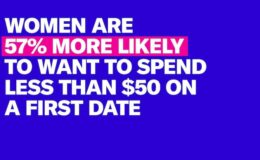In early June, a close friend and successful big-business consultant reached out for a mid-afternoon pep talk in advance of new product launch for his largest client. After nearly a year of work to get the product to the starting line, he sensed something was missing. “I’m struggling, Ronell,” he said. “This is a big push for us, and into a new market. Something’s missing. We have the marketing, the sales channels, the messaging, even the staff, down. We need a secret sauce.”
I chuckled aloud. This was the fifth time in as many months that I’d heard the words “secret sauce” mentioned, and each time they were being used to reference a supposedly unique aspect of a business:
- “We don’t want to give away our secret sauce.”
- “Great service is our secret sauce.”
- “Our secret sauce is having a thorough understanding of the content marketing process.”
- “Their secret sauce is product design.”
In this post, I’m going to explain what people mean when they refer to a so-called secret sauce. Then, I’m going to make it clear that you don’t need one.
What is the secret sauce?
The words secret sauce are used in reference to a component or element of a product or service that is held close to the vest—closely guarded from those outside the company. It’s viewed as a competitive advantage of sorts, one that results in significant success over the competitors. The reality, however, is that there is no such thing as a secret sauce in business.
The secret sauce fallacy
When people talk about having a secret sauce, they are really talking about a market advantage the competition is unaware of and thus cannot replicate—a hidden moat, if you will. I’m not sure about you, but that seems farcical at best. Name one business whose primary advantage is something the competition is totally unaware of? More likely, what marketers are referring to when referencing “secret sauce” is their perceived competitive advantage, but it’s not a secret.
The same is true across the entire business landscape, where—no matter what category of business you dabble in—things get more competitive by the day.

There is no secret to business success
The years I spent consulting small and mid-sized businesses on product design and marketing were eye-opening to the nth degree. Every call began the same way: “I have an amazing product that will revolutionize the market,” they’d begin. “We just need your help in getting it to market.”
My first five questions always provoked a bit of clarity.
- What pain points are you removing for prospects?
- How are you uniquely qualified to meet this challenge?
- What is the total addressable market?
- How much are prospects willing to pay for your product/service?
- How is this product/service meaningfully different from what’s being offered by the competition?
Typically, after this line of questions, I heard a lot of stammering and a confused, “We’re better than the competition.”
I hated being the bearer of bad news continually, but better does not pay the bills. In fact, the desire to be “better” is one of the main reasons businesses go under each day. Consumers might tell you they want a better product, but what they mean is “I want a product that’s worthy of me leaving my current product or service provider.”
Hit the competition where it hurts.
The example I love to use to make this point involves cars.
When Lexus came onto the scene in 1989, critics joked that the brand was nothing more than “upscale Toyota with a different badge.” How dare a Japanese brand go head-to-head in the luxury category against the likes of BMW, Mercedes-Benz and Audi? they joked. What everyone missed was Lexus never intended to go head-to-head against the competition. (Full disclosure: I spent four years as a business writer covering automotive retail.)
Instead, the upstart attacked the weaknesses, or holes, in the luxury category, refusing to offer watered-down models and committing to service in a way that no luxury brand had done previously. For example, Lexus was one of the first carmakers to offer loaners during routine service visits, and the brand’s showrooms are typically replete with free food, drinks and sponsored events, including musical performances.
Like Apple, the brand has made a point of putting the needs of users first, creating products and services that remove pain points endured from other companies, replacing them with products and services prospects are willing to pay for. As this example highlights, you don’t need a secret sauce. What you need is to do is force the competition to play your game, compete on your terms, and do so in a way that is least advantageous to them.
Make this tactic work for you by following these three simple steps:
1. Remove pain points.
Instead of looking for ways to do better what the competition already does well, strive to find holes in their business—specifically holes they cannot easily fix. Say you’re an upstart marketing firm that’s having trouble attracting clients, and one of your competitors seems to have a lock on the business in your area. You’ve reasoned that you cannot successfully compete unless you can take some of their business.
First, reach out to some of the vendors doing business with your competition, and ask what the latter does well, what they could do better, and what problem areas they have in working with the company. Next, use social media, personal contacts, business contacts and even personal relationships to reach out to clients doing business with the company to discern specific pain points related to service, in addition to asking what could a competitor offer that would earn them the business.
Finally—and only do this if you can do so discreetly—talk to employees of the competitor, asking about bottlenecks, client interaction and areas they can improve upon as shared with them by clients. Then attack these areas with your business’s offerings.
2. Be meaningfully different.
Apple’s slogan, “Think different,” is famous the world over. But, as shared earlier in the post, differentiation is only a small part of what sets the industry giant apart. For your company, being meaningfully different is your only real option. That means finding an area of opportunity that sets you apart from the completion in a way that is visible and has value to those you would serve.
A great example is California-based In-N-Out Burger. The chain is forcing other fast food joints to compete on terms favorable to the upstart: fresh, never frozen meat; no heat lamps or microwaves; and higher wages. These “different” elements appeal to foodies looking for a fast, fresh option that delivers impeccable service, which are all areas the competition suffers with. This video from business consultant Michael Michalowicz highlights how you can make this line of thinking work for your enterprise:
3. Make service a hallmark of your business.
We’ve already talked about Lexus, but examples abound of how many of the world’s most beloved brands came to be primarily because of a relentless focus on service. This makes sense when you consider that the largest weaknesses for any large company is often customer service and customer experience. And that hole is the perfect opening for upstarts, even yours.
If you’re a content marketing firm or digital marketer, making client services a priority is a must. Put as much emphasis on retaining the business as you do on courtship and signing the contract. In addition to weekly meetings and status updates, shoot them the occasional “checking in” email, making them aware that you’re thinking of them and are available should anything arise. Most important, make them aware that, with every interaction, exceeding the level of service they’ve come to expect from previous vendors is your goal.
Send the principals flowers or cards on their anniversaries; empower your project managers to go the extra mile, even if it’s outside of the scope of the contract; and visit with the company at least once per quarter to say hello, grab a cup of coffee or to buy them lunch. A phrase I repeat ad nauseam as a consultant is, “Success in business starts with you not creating solutions for problems that do not exist.”
Over time, it seemed to sink in, with many clients adopting the tactics outlined above. Give these three tips a try in your business. I’m convinced they can work for you as they have worked for dozens of my clients, all of whom have come to realize the fallacy of there being a secret sauce for business success.





